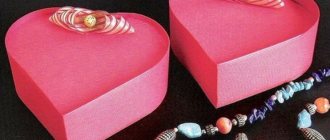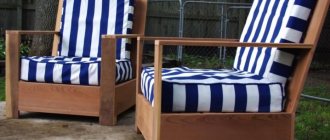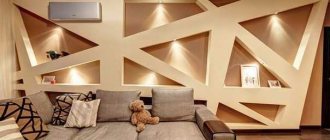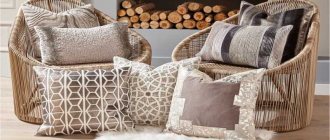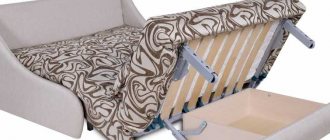Arranging a kitchen is a never-ending process. Ideas are constantly being born to improve the interior and add new accents. Some decorative elements can be changed according to the season and mood, such as curtains. Knowing how to crochet kitchen curtains with your own hands, all you need to do is find interesting patterns on the Internet to create a whole set of openwork curtains for a kitchen window or doorway. The most difficult dilemma is choosing from the variety of knitting techniques. And the result is a window or door decorated with a unique curtain.
Simple crochet kitchen curtain with colorful floral border
This model uses a simple mesh, along which colored openwork paths run in several places. Decorated with a border of simple flowers. You can come up with some other border here.
Knitting should begin with motifs - flowers, which are immediately connected to each other in a line. You need enough flowers to create a border the width of your curtain.
Then chains of air loops are attached along the upper edge of the petals in the order according to the diagram and then the curtain is knitted upward with a mesh.
It is more convenient to finish with an openwork track, from which you can hang the curtain.
Knitting pattern for light mesh curtains for windows
The second model is very similar to the first, the mesh in it is only connected according to a different pattern with dense inserts.
You should also start knitting from the border, or rather, from a chain of air loops along which to thread the lower border. In this case, you won’t have to make calculations and the border will turn out perfect, otherwise it may end up in incomplete fragments.
Next we knit the curtain up.
And once finished, you will need to knit the border on the side, and from the bottom - this way you can adjust the height of the curtain.
Knitted curtains in the kitchen interior
Kitchen curtains knitted or crocheted look original, touching and cute. This is not only a manifestation of creativity, giving the room an individual character, it is also the creation of an original, unparalleled decorative item for the kitchen.
Light knitted curtains will create a festive atmosphere, filling the room with freshness and light. The products are suitable for interiors made in a classic style, as well as for touching and romantic designs: in eco, Provence and country styles.
It is important to choose the right pattern and size of the canvas. For example, knitted curtains for a small kitchen should be small in size - the open surface of the window and the penetrating light will visually increase the space. As a rule, the length of an openwork knitted curtain rarely “falls” below the window sill; often these are short curtains covering the lower half of the window. The decoration of the opening is complemented by crocheted lambrequins, made in the same style, identical or contrasting in color.
To create a rustic style, discreet patterns with plant or animal motifs and cute pictures of rural life are suitable. The palette is muted shades of blue, lilac, olive and any variants of white paint.
Classics are characterized by a more lush and elaborate design. Therefore, crocheting curtains for the hall, for example, will require large, rich patterns with alternating geometric shapes or large flowers, leaves, butterflies, etc.
Related article: Wet plaster - a modern way of finishing walls
Curtains may differ in execution technique:
Attention! When working on full-size products (from floor to ceiling), take care of reliable fastening. Knitted curtains, especially with knitting needles, will turn out to be quite heavy.
If you are not confident in your own abilities, and this is your first time crocheting curtains, start by decorating the finished products - make a border or garter for the curtain. You will immediately see how with the appearance of these insignificant little things, created with your own hands, the entire room will be transformed, as if absorbing your care and love for the family hearth.
And rest assured, your first successful attempts will inspire you to create new, larger-scale masterpieces. Let it first be crocheting curtains with diagrams, detailed instructions and descriptions of processes. But soon you will get the hang of it and will be able to create and bring to life your own masterpieces.
Beautiful model of two-piece knitted curtains
The curtain consists of two parts, each of which is knitted from left to right (right to left) in relation to the window, i.e., we will need to cast on the number of loops along the length of the curtain and knit it in width.
What I especially like is that there is no need to do any calculations here.
We proceed as follows: first we must decide how long our knitted curtain will be.
We start crocheting curtains with a set of air loops. The result should be a chain equal to the length of the curtain, maybe a little less, because with further knitting it will stretch. But this doesn’t matter, because we will knit the first row from another skein!
This way you can adjust the size and tie or undo the cast-on chain.
This is how the curtain pattern will be arranged:
But for knitting, of course, it is more convenient to read the pattern turned 90 degrees, and we will knit the fabric from the bottom up.
To knit the second half of the curtain you need to cast on the same number of loops as when knitting the first part so that they are absolutely the same.
I would also tie the finished curtains at the top and bottom with a row of single crochets. This way the edges will be smoother and neater and it will be more convenient to hang the curtains.
Crochet curtain designs
Depending on the purpose and semantic load of the room, the tori will differ. You need to take into account the location of the room in relation to the cardinal directions. So, for southern placement you will need a long fabric, which should be knitted tightly.
If your room is on the sunny side, then knit thick curtains.
Note! Openwork curtains are always combined with covers and napkins made using the same technique.
Crocheted curtains for the kitchen should be beautiful and practical. This means that the window should only be partially covered. In this case, the window sill will be additional space for placing items. As you use it, you will have to wash the fabric frequently. In this regard, you should choose high-quality yarn, tightly knitted. In this case, the original appearance will be maintained after numerous washes.
Choose high-quality material for knitting curtains, especially in the kitchen, where the curtains will have to be washed very often.
The edges may look like leaves or flowers. For the bottom (rounded, straight) fringe and tassels are used. Crochet curtains for the kitchen with patterns will help you quickly create the desired masterpiece.
Long composition curtains look great in the bedroom. They will emphasize the French direction of design. The canvases are decorated with fringe with tassels and folds.
Today, fringed curtains are very fashionable, which can be hung not only on windows, but also on doors.
It is better to make two voluminous curtains, connecting in the middle. This approach will create unobstructed access to the balcony, window, and windowsill.
Note! It is allowed to combine two products with different colors, patterns, and densities. One will be closer to the window, the other to the living space.
For the nursery, choose the right patterns in the form of animals, fairy tale characters, and cartoons. The fillet technique will help the master with this. This method allows you not to use night curtains as a second layer.
Curtains in the form of animals will lift your spirits every day.
Knitted curtain with cascading waves of threads
Curtains made of threads are fashionable now, and in this knitted version they look especially stylish.
This photo was first published on a foreign website, but the link to it, unfortunately, is not working.
Apparently, the needlewomen themselves came up with patterns for this curtain, which I found on the Internet.
But it seems to me that the pattern could be corrected and the full squares between the arches could be placed not in a checkerboard pattern, but on top of each other, which is exactly how the curtains are seen in the photo.
Then you will need to alternate rows: a row of single crochets and a row of grid (empty and filled cells).
Someone might like the curtain in this color version, it’s very cheerful and bright. A particularly delicate curtain that will suit any interior will be available in white (see photo above).
And it is connected in a slightly different way.
The numbers in the diagram indicate the number of loops in each motif. I only have doubts about 65 VP in the arches, it’s too much, I need to try it on a sample and clarify this figure.
In the pattern you can use single crochets, or double crochets, or three crochets, as you wish.
Before crocheting curtains with such thread waves, you will need to make a calculation.
Knit a small sample measuring 10 - 20 cm and adjust the number of air loops in the arches as you wish.
Iron the sample through a damp cloth and count how many loops there are per 1 cm of pattern. Multiply this amount by the width of the future curtain. Approximately this number of loops will need to be cast on for knitting.
But you also need to take into account that the pattern begins and ends with double crochets. Therefore, to be on the safe side, I also recommend starting knitting the first row with another skein.
We knit the curtain from top to bottom.
Step-by-step instructions for knitting curtains with your own hands ↑
Curtains crocheted or knitted create coziness in the house; beautiful patterns with diagrams and step-by-step descriptions of the process can be found on the Internet or in magazines for needlewomen. When planning a large-scale project, every step is thought through - this speeds up the process.
Crochet ↑
Knitted curtains that fit the size of the window glass in the kitchen look stylish. Elegant and airy, they do not require hanging a curtain rod and can be easily raised and lowered. Step-by-step instructions and patterns for knitting curtains using the fillet technique:
The diagrams are designed for a product measuring 40 cm x 120 cm. The kitchen, as a rule, has a standard window size
To work you will need:
- cotton yarn at the rate of 400 m/50 g - about 300 m will be needed for curtains;
- knitting is carried out with crochet number 1;
- For fastening you need brass rings - 6 for each curtain.
Description:
- The estimated width of the curtain is 60 squares. Knitting begins with a chain of 180 air loops and 4 lifting loops;
- then knit according to the pattern, alternating empty and filled cells as shown in the figure below;
- curtain height – 181 rows;
- Before assembly, the curtains are washed, straightened, starched and lightly steamed.
- Rings are sewn to the top edge.
Detailed diagrams of each part and a detailed description of how to knit the first rows:
Scheme for curtainsNote! In the drawing, white indicates empty squares, gray indicates filled cells. The contours of the cats are formed from mesh, which gives the composition for the kitchen a fullness of air.
Knitting ↑
A knitting needle is not as common a tool for knitted curtains as a hook, although this knitting method has a large number of openwork patterns. A significant difference is that when knitting, wool yarn is used, natural or with additives from synthetic fibers.
Knitted curtains turn out fluffy and cozy. This is not exactly a summer option, but an idea for the cold season.
Just the sight of this knitted curtain makes you feel warm
To work you will need:
- yarn (70% mohair, 30% silk) with a density of 210 m / 25 g olive color;
- estimated quantity – 250 g;
- knitting needle No. 6.5 (2 pcs.);
- hook number 6.
The size of the finished product is 165 cm x 285 cm, knitting density is 13.5 loops x 14 rows = 10 x 10 cm.
As with knitting any product, knit stitches, purl stitches and yarn overs alternate, as shown in the diagram:
Purl loops and yarn overs
Description:
- cast on 223 loops and knit one purl row with facial loops;
- knit 10 repeats in an openwork pattern according to the pattern;
- after 128 cm from the first row, the openwork pattern begins to be nullified - 1, 4 and 10 repeats are performed with stockinette stitch;
- alternate repeats as follows: after 2 repeats knit the 8th, and then through every second repeat = 6th and 11th, 2nd, 3rd, 9th and 5th - in stockinette stitch;
- In repeat 7, make two more, then all remaining loops 29 cm high in stockinette stitch and loosely closed;
- the long sides and the top edge are crocheted - 1 row of single crochet and 1 row of “crawfish step”;
- the upper edge of the curtain is turned to the wrong side by 15 cm and sewn;
- At a distance of 10 cm from the edge, another line is laid and two drawstrings are obtained.
Note! The finished product is moistened, stretched to size, avoiding distortions, and left until completely dry.
Lambrequin knitted with knitting needles (Fig. 2 and 3) is in no way inferior to lace samples (Fig. 1)
How to knit curtains from round motifs
Crocheting curtains from motifs is also interesting, one or two motifs at a time and we will quietly arrive at the desired result. And they turn out simply gorgeous!
I offer you diagrams of three interesting models and even four - we have a diagram and description of one similar popular curtain in a separate old post.
This is a very beautiful and somewhat unusual motif, framed with openwork mesh. Between the motives for connection there are small simple motives.
First we knit one large motif, and then when knitting the second and each next one in the last row, we connect them together using two toes on each side.
Intermediate motifs can be knitted immediately or after completing the knitting of all large motifs, connecting with them.
There is no border here, the circular motifs themselves create a beautiful edge.
For a detailed master class on knitting and combining motifs, watch my video.
What do you need to knit unique curtains?
One of the advantages of needlework is that it does not require large material costs. All the necessary materials and equipment for knitting curtains for the kitchen can be purchased in specialized stores. First of all, you will need several hooks of different sizes, threads of suitable thickness and pattern.
When choosing a hook, remember that its thickness should be twice the thickness of the yarn. What it will be made of (metal, wood or plastic) is not so important, the main thing is that it is convenient to use.
Natural fiber yarn is suitable for a kitchen tablecloth or openwork window curtain. The best option is considered to be threads made of cotton, linen, silk and wool. You can also use synthetic models, but they are not durable. The choice of colors depends only on your personal preferences.
If you wish, you can purchase several skeins of different shades and thicknesses and alternate them as you work.
Air curtain made of floral motifs
This very light airy openwork curtain is knitted from simple motifs - flowers. True, I didn’t look at the diagram carefully and knitted a flower with 12 petals instead of 16.
Similar to the first option, you first need to knit large motifs, and then small ones. The connection is made using two arches.
Please note: in the video in the 3rd row I knit two columns into arches, but you need three.
Beautiful curtain made of openwork square motifs - video master class
Absolutely everyone on the channel liked this curtain, probably more than others. In addition to the fact that the motif here is beautiful, and not round, but square, there is also a curtain, or better to call it a curtain, of a small size. It hangs from the ceiling to the windowsill and maybe even a little higher, which means you can tie it up quite quickly.
The motifs are arranged diagonally among themselves, which creates an additional effect and the edge turns out to be broken, along the bottom of which there is a light border. You also need to tie a border along the top edge so that there is something to attach the hooks to.
But due to this arrangement, there is a slight difficulty - you will have to knit more halves of the motifs (triangles), which will need to be placed on the sides and top edge.
Look at the diagram: in the corner, triangles are first placed on the top and sides, and then squares.
Motifs for all elements are combined with picot.
The sides of the finished curtain are tied with single crochets, and I would also recommend tying the top edge with stitches first, and then knitting the border, it will be neater.
If anyone has difficulty reading the diagram, watch my microcontroller in the video.
Knitting a square motif
Knitting half of the motif
Knitting borders and joining motifs
If you liked these crocheted curtains - the patterns for which I selected and in general you like the idea of crocheted curtains, join our project, knit with pleasure!
Advice from experienced craftswomen
Choosing the right threads and tools is very important when knitting curtains with your own hands. When purchasing materials, you need to consider the thickness, length of the yarn, as well as the number and type of hook. The higher the density of the threads, the thicker the hook should be (that’s why such a specific numbering for this device appeared).
Although crochet needlework is not particularly difficult, it is still worth remembering the features of this type of knitting:
- When using wool threads, a plastic hook is suitable for knitting, and for cotton and linen, a metal tool is suitable.
- Depending on the density of the knitting, you can create a product that can easily replace tired blinds (this solution is especially relevant for country houses). If you are just starting your acquaintance with needlework, try making a small piece of knitting - a square with sides of 10 by 10 cm.
- The finished sample must be carefully ironed and determined whether such a model suits the design of the room (to do this, attach the canvas to the window opening and evaluate the tightness of the knitting).
- It is very important to wash the finished product in accordance with the recommendations indicated on the thread packaging). A clean curtain should be dried a little (to a semi-damp state), then ironed along its entire length and can be hung on the curtain rod.
Related article: Creating a unique collage from photographs: design options
Creating a beautiful, cozy and attractive interior requires careful attention to the smallest details. To make the design of the room more harmonious, you can use a knitted curtain as a style basis. The appearance of the window opening and bright curtains, so popular in our country, are exactly the decorative element that will give your home a unique zest.
Openwork crochet motifs (2 videos)
Different curtain options and patterns (50 photos)
The best posts
- Wall panels made of fabric - creative DIY decor
- Army album - a memory of service and the best DIY gift
- Floor vase - spectacular DIY decor (+50 photos)
- We make products for storing jewelry with our own hands (+35 photos)
- How to make a Christmas tree for your home with your own hands: the best master classes
- 6 ideas for decorating your phone - how to stand out from the crowd (42 photos)
- Original paintings and wallpaper panels with your own hands
- Do-it-yourself original lamps from various bottles (3 MK)
